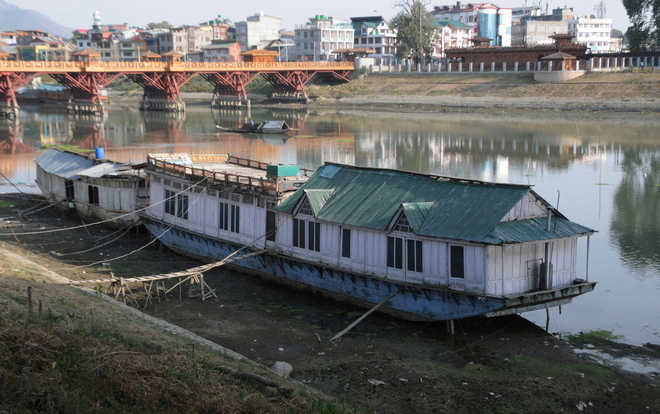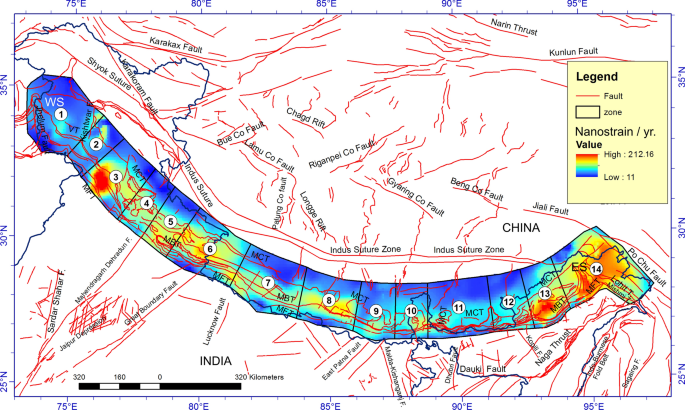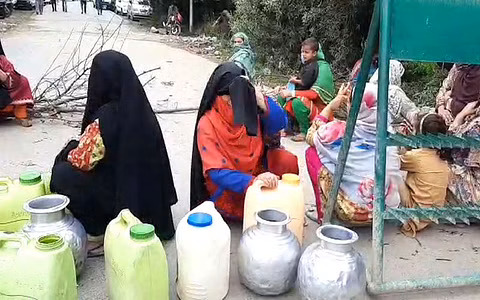Unplanned urbanisation, govt apathy, changing climate major reasons
Once the lifeline of the Kashmir valley, the Jhelum is now facing a series of challenges originating from unplanned urbanisation, apathy of successive governments and changing climatic patterns.
The river’s water level over the last one year has been a cause for concern and also an indicator of drought as the region has received largely deficient precipitation during the monsoon and winter seasons.
Jhelum — the main river in the Kashmir region which has 24 tributaries that source it with water supply throughout the year — has 24 catchment areas that are further sub-divided into 60 sub-catchments. The river is initially formed by the junction of three streams which rise at the south-east end of the Kashmir valley and traverses almost 150 miles from its source in Verinag in south Kashmir to Baramulla in north Kashmir, from where it flows further into Pakistan.
Deteriorating water quality
A study by eight researchers of the earth sciences department of the University of Kashmir and the assessments provided by the officials of the State Pollution Control Board (SPCB) have pointed out that increased deforestation over the past decades, reckless use of agriculture chemicals and unscientific dumping of domestic sewage had deteriorated the Jhelum’s water quality.
The river’s water quality is categorised as ‘Class A’ at its source at the Verinag spring by the SPCB, meaning it is worth drinking without treatment. The quality, however, degrades as the river flows its course through a landscape which is becoming increasingly urbanised. Along the rest of its course in the region, the river is categorised as ‘Class B’, meaning it is safe for outdoor bathing only.
The study titled “Massive land system changes impact water quality of the Jhelum in Kashmir Himalayas” found that drastic changes in water quality of the river since the past three decades were manifested by increase in nitrate-nitrogen, total dissolved solids and electric conductivity.
“Owing to the forest degradation in the catchment area of the Jhelum, both total dissolved solids as well conductivity values have gone up as more sediments and soil gets eroded into the streams,” Irfan Rashid, assistant professor in the earth sciences department and one of the several authors of the study, told Kashmir Post.
The study also found dramatic increase of fertilisers and other chemicals used to boost agriculture productivity. In the Lidder catchment area, a tributary of the Jhelum in south Kashmir, the fertiliser use increased from 24 kg per hectare in the 1980s to 97 kg per hectare in 2008, Rashid added.
Drought spell
While the precipitation received in the Kashmir valley was minimal for most of the period during the past one year, recent summer rainfall temporarily swelled the river’s water level. The fix, however, is that the rain in summer get drained too quickly and do not make a lasting impact on the river’s health.
On October 17 last year, the Jhelum registered a grim feat in its recorded history as its water level dropped to 0.65 feet below the zero point.
The minus 0.65 feet was the “lowest gauge ever recorded at Sangam site” in south Kashmir in more than six decades since the river’s readings were recorded on a daily basis.
The drop in water level was the result of one of the longest drought spell which continued for almost the past one year. Since then the Jhelum water level has mostly remained at alarming levels as the Kashmir valley faces erratic weather and unusually-patterned precipitation.
Stressed fish washed ashore
In October last year, thousands of fish came to the surface and banks of the Jhelum along the Safa Kadal-Qamarwari stretch when pollutants from two canals – golden and silver — were released into the river, leading to oxygen depletion. The high-nitrogen content in water released from the canals had sent thousands of fish in a state of stress after which they rushed to the surface and lost consciousness. “The dissolved oxygen required for the local fish breed is 4.5 to 5 parts per million. The incident happened when it fell below the critical level, that is below 2 to 3 parts per million,” an official of the fisheries department had said.
Study by Kashmir varsity researchers
A study by eight researchers of the earth sciences department of the University of Kashmir and the assessments provided by the officials of the State Pollution Control Board have pointed out that increased deforestation over the past decades, reckless use of agriculture chemicals and unscientific dumping of domestic sewage had deteriorated the Jhelum’s water quality.






